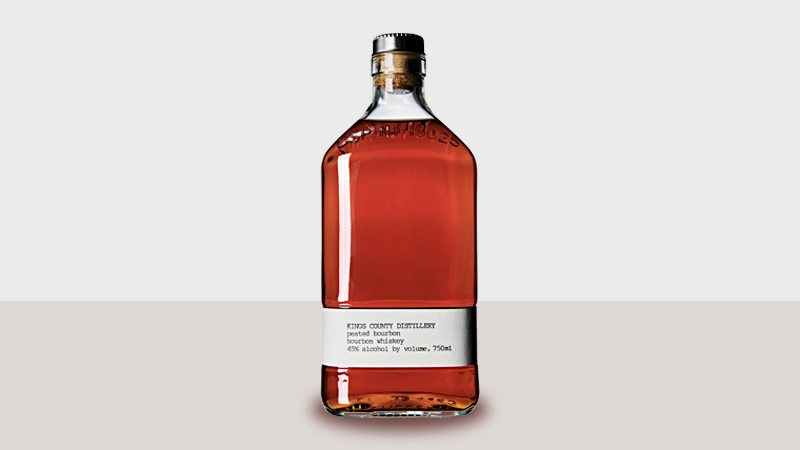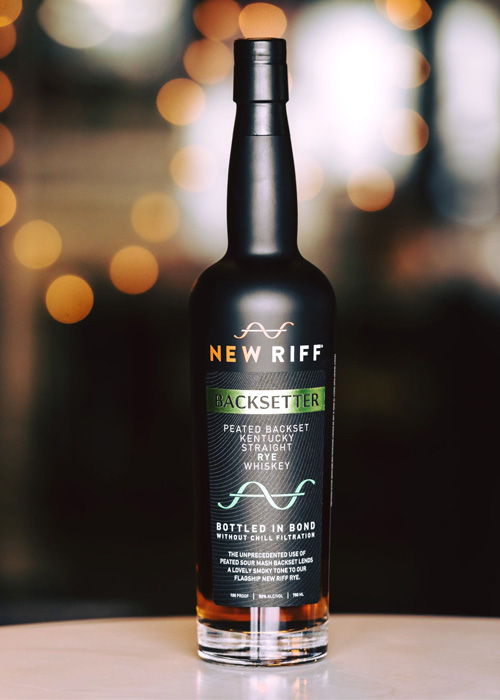If a whiff of smoke wafts off a glass of brown spirit, chances are good the liquid is peaty Scotch, or perhaps a peated single-malt whisky from Japan or India. But in the last decade, a handful of distillers making traditional American style whiskeys — more specifically bourbon and rye — have adopted peat, too.
The mash bill offers the most straightforward way of adding peat, with several distilleries substituting peated malt for some or all of the usual amount in their bourbon or rye. In Brooklyn, N.Y., Kings County Distillery was among the first to do so, if unintentionally. “It was a function of just running out of the right stuff and having the wrong stuff handy,” says co-founder and distiller Colin Spoelman, explaining that the distillery had exhausted the regular malt for its bourbon mash bill and was forced to use its stock of peated malt, intended for a single-malt whiskey, instead. “A legend was born.”
Launched in 2014, Kings County Peated Bourbon found acceptance among New York City consumers, whom Spoelman says included a large number of Scotch fans. “Peated bourbon was a great way to meet those Scotch drinkers who were curious about bourbon or vice-versa,” he says. “It tasted so different than anything else that was out there, and still [does].”
Don’t miss a drop!
Get the latest in beer, wine, and cocktail culture sent straight to your inbox.
The bourbon, made with 75 percent organic New York-grown corn and 25 percent Scottish malted barley, has gone on to become one of the distillery’s bestsellers, accounting for 25 percent of its production and 21 percent of sales. It was joined by a peated rye in 2019.
Other distilleries adding peated malt to their mash bills include Liberty Pole Spirits in Washington, Pa., which combines peated malt with Bloody Butcher corn for its bourbon; Detroit’s Two James Spirits, which makes J. Riddle Peated bourbon; and Grand Traverse Distillery in Traverse City, Mich., whose Isles O’ rye (previously called Islay rye) is made with 80 percent locally grown rye and 20 percent Scottish peated malt, and bottled-in-bond. None of these whiskeys tastes like the others, each showcasing a different balance of smoke with traditional corn, rye, and barrel flavors.
Spoelman attributes this variation to the newness of incorporating peat into American whiskey. “We’re all a little bit in the dark when it comes to peat, which has led us all down different paths” in terms of production choices, he says, pointing out the different ways peatiness can be tweaked through distillation cuts, time in the barrel, and other factors.

Finishing Touch
A simpler way to layer on peated flavor is by finishing mature bourbon or rye in barrels that previously held peated whisky, almost always Scotch. Hudson Whiskey, made in Tuthilltown, N.Y., found a natural synergy with its parent company, William Grant & Sons, which acquired the brand in 2010 and the distillery in 2017. “[We said] now that we’re one big family, let’s do something that honors both what we do really well and what William Grant does really well,” says chief distiller Brendan O’Rourke. “We wanted to do this collaboration of a peated whiskey.”
The resulting product, Back Room Deal rye, melds the two cultures and brings things full circle to boot. Starting off as fully mature Hudson rye, Back Room Deal is finished in casks that once held peated single malt from William Grant’s Ailsa Bay Distillery in South Ayrshire, Scotland. But even before they’d gotten to that point, the casks — a mix of 15-, 20-, and 30-gallon barrels — had begun life in Tuthilltown, where they’d matured Hudson whiskey.
The finishing period was initially intended to be six to nine months, but unforeseen delays kept the whiskey in cask for three years, which O’Rourke says presented a challenge at blending time. “We had peated liquid that was phenomenal — if you loved peat, you would be blown away by it,” he says. “But for regular palates, you wouldn’t be able to tell that there was any rye in there, and that’s not what I wanted to release.” Instead, he blended additional, unpeated rye into the peated stock to strike a balance. “[We got] this perfect marriage of the two pretty strong flavors to actually stand on their own,” he says.
Several other distilleries have put mature bourbon or rye into peated barrels to impart smoky flavors, like Oppidan Spirits in Wheeling, Ill., with its Smoke + Sea bourbon, and Pittsburgh’s Wigle Distillery, whose Kilted rye is made with malted rye and finished in Laphroaig quarter casks.
Louisville, Ky.-based Buzzard’s Roost takes a slightly different approach with its Peated Barrel rye, finishing the 4-year-old whiskey for six to 10 weeks in new charred oak barrels that were smoked over Scottish peat. The barrels, made by Independent Stave Company, create a delicate smoke character wafting through the spicy whiskey.

Post-Modern Flavor
The most unorthodox method for making peated bourbon, however, comes from Newport, Ky.’s New Riff Distilling. Like most Kentucky bourbon distilleries, New Riff uses the sour mash process, adding a portion of backset from a previous distillation to each new mash. The backset regulates pH, saves energy in the cooking process, and, as New Riff discovered, imparts flavor as well.
The distillery had just finished making peated malt whiskey and was about to switch back to bourbon. On a whim, head distiller Brian Sprance decided to throw some peated backset into the bourbon mash. “I believe the exact words were, ‘Boss, should we put this in?’ And Brian’s response was ‘F*** it, let her ride!’” says Jay Erisman, co-founder and vice president of strategic development. “We weren’t even sure it would make all that much of a difference.”
But it did. New Riff Backsetter bourbon and rye came out in 2020, showcasing traditional flavors with a subtle, creeping smoke that blooms and lingers on the finish. Erisman describes Backsetter as a “post-modern whiskey,” something that should be impossible, given that backset isn’t considered a flavor factor. “Sour mash would not be a really great way to go into a project like this and say, ‘We want to make peat flavored bourbon! What should we add?’” he says.
Regardless of how they do it, American whiskeys incorporating peat are carving out a small niche, with room to grow. “We have a certain amount of freedom that so many great distilleries don’t necessarily have,” Spoelman says. “So I hope that we get to exploit that freedom as long as possible and to really use that opportunity to push the boundaries of American whiskey. My hope is that peated bourbon is just the beginning and there’s a lot more to come.”
This story is a part of VP Pro, our free content platform and newsletter for the drinks industry, covering wine, beer, and liquor — and beyond. Sign up for VP Pro now!


